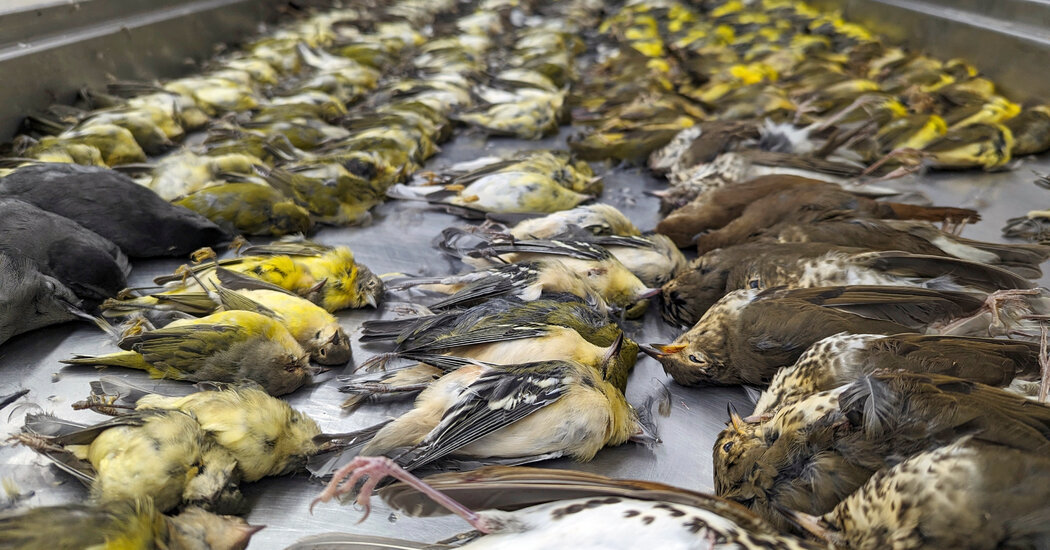A mass of birds died in Chicago in October after striking one building, adding to the push for more protections in one of the most dangerous cities for avian migration.
One night in October, an enormous swirl of birds flew over Chicago, astounding those who had their binoculars trained on the flashes of yellow, white and brown speckling the sky above. It seemed like an incredible moment for birders, but the next day ended with nearly a thousand dead birds outside one building along Lake Michigan and even more scattered across the city’s streets.
Migration experts said that the unusual mass deaths were the product of a number of common occurrences happening all at once. One factor, they said, was easily preventable: the number of buildings that had their lights on, which disoriented birds that were migrating overnight on Oct. 4.
Since October, there have been significant changes at the building where the highest concentration of birds died, McCormick Place Lakeside Center, but advocates for bird safety are seeking measures that protect birds across the city. These measures could include treating windows with film that is more visible to birds, using shutters or drapes to block windows and turning off decorative lighting at night during migration seasons.
Judy Pollock, president of the Chicago Bird Alliance, said that the changes at McCormick Place were excellent. “But there’s a lot of other buildings that need to do something about their windows,” she said.
The Chicago Bird Collision Monitors, a volunteer group that recovers dead birds and helps those that are injured, found 1,600 dead or injured birds in a downtown area smaller than two square miles on Oct. 5, said the group’s director, Annette Prince. Ms. Prince said thousands of additional birds could have died or been hurt in the city, because the group does not reach every area and birds may have struck buildings after the volunteers left.
